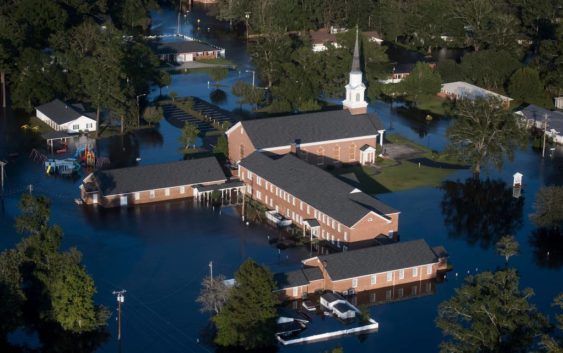- North Texas family in California narrowly escaped wildfires while their home burned down
- Firefighters and equipment from Central Texas deployed to help battle California wildfires
- California mother, former Texan can't imagine what would've happened to son if Pallisades school wasn't on winter break during wildfire outbreak
- Texas sending firefighters, equipment to help fight California wildfires, Gov. Abbott says
- Texas sending firefighters, equipment to help fight California wildfires | Houston-area firefighters included
‘The water is not finished’: Aerial tour shows SC flooding, hurricane’s impact

South Carolina Gov. Henry McMaster’s flight over soggy parts of the state Monday turned from an observation trip to a rescue mission when he spotted two people stranded atop a flooded vehicle, surrounded by water rushing into the area from Florence.
Flying with a South Carolina National Guard crew in a Blackhawk helicopter, the governor was taking a swing around Chesterfield and Marlboro counties when he pointed out of the helicopter at the men, who at first looked like they were floating in a red raft.
But, as the crew swung in for a closer look, McMaster and Chesterfield County Sheriff Jay Brooks — who joined the governor for a portion of the day to view flooded areas in his county — noticed that the men weren’t on a raft but instead on the roof of what appeared to be a flooded pickup truck.
Brooks called down to dispatchers, who were able to send in a boat crew to get the men to safety. After making another pass over the men, the governor asked his pilot if the helicopter could land nearby to watch them get to land with rescuers who turned out to be a Swift Water team from Louisiana.
From the ground, McMaster watched as the men, now in life vests and helmets, boated to dry ground, flashing thumbs up to the men and their boat crew.
“It’s good they got out of the vehicle before the water came up too high for them to get out,” McMaster said, noting it looked like water in the area had risen a foot or more since he and his crew had made their first pass and noticed the men.
Sheriff Brooks later told The Associated Press the men had been identified as Chesterfield County residents Joel Dixon and George Love. On Tuesday, Brooks told AP that the men had tried to drive around barricades blocking off the low-lying road and got stranded. The sheriff said the pair had been on the roof of their truck for about an hour before they were spotted from the air.
“Water was rising fast,” Brooks told AP. “The truck stalled in the water and was swept into the trees.”
The aerial view was the governor’s first of many areas of northeastern South Carolina, where residents for days have been watching and waiting to see how much the state’s rivers would rise as they continue to fill up with waters flowing downstream from swollen banks in North Carolina.
For a week, Department of Natural Resources Col. Alvin Taylor has warned about four rivers in northeastern South Carolina, an area known as the Pee Dee. All four rivers — the Waccamaw, Pee Dee, Lumber and Black — flooded in the torrent of rain that came along with Hurricane Matthew in 2016, in part because of the same system of intertwined rivers that flow into this state from North Carolina.
On Tuesday, the governor planned to meet with top U.S. Department of Defense officials to discuss coordinated response efforts to the storm in South Carolina. National Guardsmen have been fanned out in many areas for more than a week, helping people get to higher ground and shore up imperiled structures and roads as the waters rise.
During his fly-around on Monday, McMaster said he and state officials were doing what they can to learn lessons from 2016. That includes trying to shore up several roads leading to Conway, a city inland from Myrtle Beach, where officials say rising waters could cut off the area similar to what’s happened to Wilmington, North Carolina.
“The water is not finished,” McMaster noted, gesturing to the flooded field that had spilled out onto the roadway and swept away the men’s vehicle.” You saw all that water in all those woods, there’s water everywhere. That’s what we’re preparing for, and what we’re ready for, is the worst case, and it looks like it might arrive.”